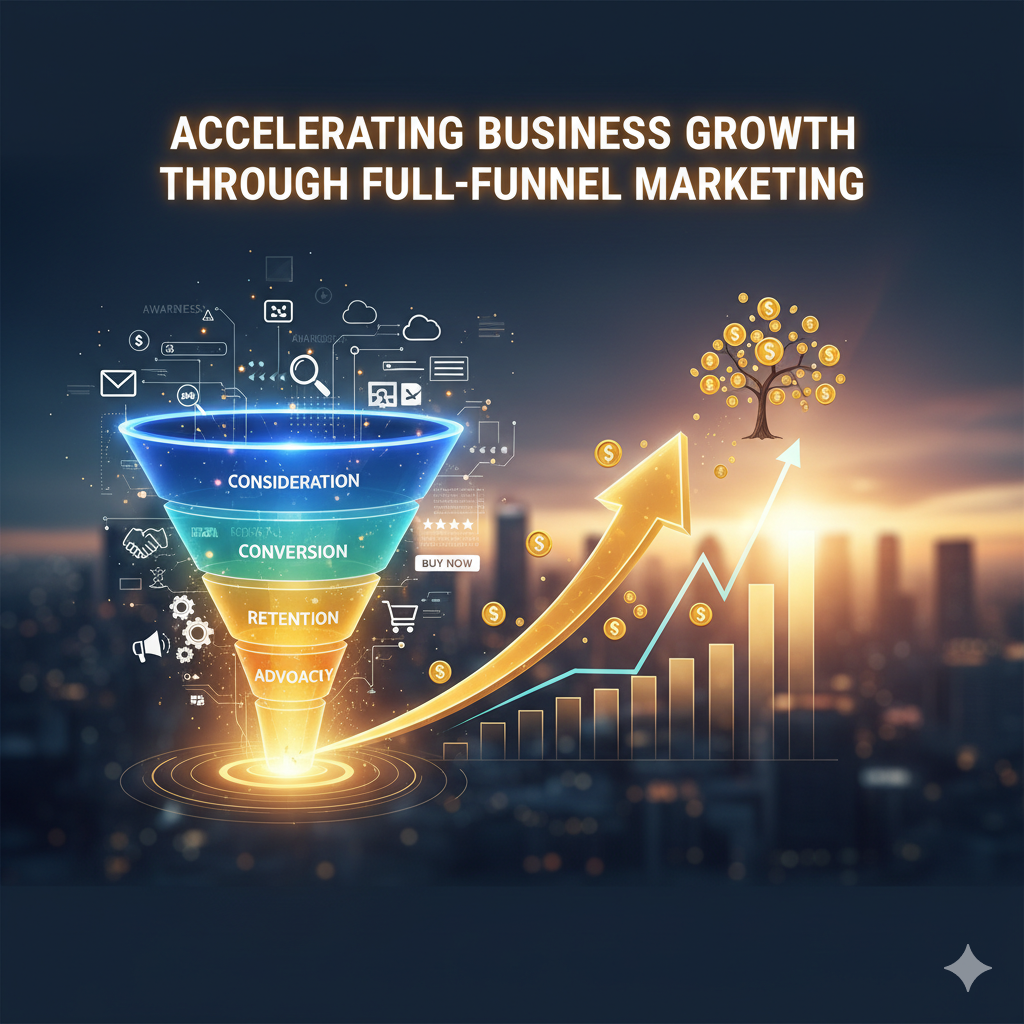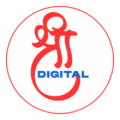
Accelerating Business Growth Through Full-Funnel Marketing
In today’s hyper-competitive marketplace, growth isn’t just about generating leads or closing sales. It’s about creating meaningful connections with your audience at every stage of their journey—from the moment they discover your brand to becoming loyal advocates. That’s where Full-Funnel Marketing comes in. By aligning strategies across the awareness, consideration, and decision stages, businesses can accelerate growth, maximize ROI, and build long-term relationships with customers.
This article explores the concept of full-funnel marketing, why it matters, and how businesses can leverage it as part of the best digital marketing practices to scale sustainably.
What is Full-Funnel Marketing?
Traditional marketing strategies often focus too heavily on either top-of-funnel awareness campaigns (brand visibility) or bottom-of-funnel conversion tactics (sales and promotions). While both are important, a fragmented approach leads to missed opportunities.
Full-funnel marketing bridges these gaps. It’s a holistic strategy that ensures your marketing efforts address all three stages of the customer journey:
Top of the Funnel (TOFU) – Awareness: Capturing attention, generating interest, and introducing your brand to potential customers.
Middle of the Funnel (MOFU) – Consideration: Educating, nurturing, and helping prospects evaluate their options.
Bottom of the Funnel (BOFU) – Conversion: Encouraging prospects to make a purchase and become customers.
“By tailoring campaigns to each stage, businesses can guide customers seamlessly through the funnel, reducing drop-offs and increasing lifetime value—one of the core principles of the best digital marketing strategies.”
Why Full-Funnel Marketing Accelerates Growth
Growth doesn’t happen by chance; it comes from building trust and credibility at every stage. Here are three reasons why Full-Funnel Marketing drives faster, more sustainable growth:
Maximizes ROI
Instead of overspending on acquisition or focusing only on retargeting, Full-Funnel Marketing optimizes spend across the journey. Each stage works together, ensuring marketing dollars generate both short-term wins and long-term relationships.Builds Brand Authority
A consistent brand presence throughout the funnel reinforces credibility. Educational content, customer testimonials, and strong CTAs combine to position your brand as a trusted partner, not just a vendor.Increases Customer Lifetime Value (CLV)
Full-Funnel Marketing strategies don’t stop at the sale. Post-purchase engagement—such as loyalty programs, upselling, and advocacy campaigns—turn customers into repeat buyers and brand ambassadors, compounding growth over time.
How to Build a Full-Funnel Marketing Strategy
Implementing Full-Funnel Marketing requires alignment across teams, channels, and goals. Here’s a roadmap to get started:
1. Top of Funnel: Build Awareness
At this stage, prospects may not know your brand exists. The goal is to capture attention and spark curiosity. Tactics include:
Content marketing: blog posts, thought leadership articles, infographics
Paid ads on search and social platforms
SEO strategies to improve organic visibility
Partnerships, influencer collaborations, and PR campaigns
If you’re a local business, combining these tactics with searches like “best digital marketing near me” can help capture nearby audiences actively looking for solutions.
2. Middle of Funnel: Nurture Consideration
Here, prospects are evaluating options. Your job is to demonstrate value, differentiate, and nurture relationships.
Offer gated content such as whitepapers, guides, or webinars
Launch email nurturing campaigns tailored to buyer personas
Share case studies, testimonials, and detailed product demos
Retarget website visitors with personalized ads
Metrics to track: lead quality, email open/click rates, webinar registrations, time on site.
3. Bottom of Funnel: Drive Conversions
At this point, prospects are ready to make a decision. Your strategy should remove friction and inspire confidence. The best digital marketing strategies at this stage focus on building trust and reducing hesitation.
Provide free trials, demos, or consultations
Share customer success stories and reviews
Offer clear CTAs and streamlined checkout processes
Use personalized offers or discounts to encourage purchase
Metrics to track: conversion rate, cost per acquisition (CPA), revenue generated.
4. Post-Purchase: Create Advocacy
The funnel doesn’t end at the sale. Delighting customers post-purchase builds loyalty and advocacy, fueling future growth.
Onboarding programs to ensure customer success
Loyalty or referral programs
Regular customer feedback loops
Engaging content tailored to existing users
Metrics to track: Net Promoter Score (NPS), repeat purchase rate, referral conversions.
Integrating Channels for Seamless Journeys
For Full-Funnel Marketing to work, integration is key. Customers don’t move linearly through the funnel—they jump between channels and touchpoints. The best digital marketing practices emphasize seamless experiences across all platforms. A few best practices include:
Unified Messaging: Ensure your brand story is consistent across ads, email, social, and your website.
Personalization: Use data to deliver relevant messaging tailored to buyer behavior and stage.
Automation: Leverage marketing automation tools to nurture leads at scale without losing personalization.
Sales Alignment: Marketing and sales must work together to pass qualified leads smoothly and follow up effectively.
Real-World Example
Consider a SaaS company launching a new project management tool:
TOFU: They publish blog posts about productivity tips and run LinkedIn ads to reach project managers.
MOFU: Interested readers are invited to a webinar showcasing how the tool improves team collaboration. Follow-up emails share case studies.
BOFU: Prospects receive a free 14-day trial and a personal demo from the sales team.
Post-purchase: Customers join an exclusive user community, get onboarding support, and are encouraged to refer colleagues.
By addressing every stage, the company not only drives conversions but also creates loyal advocates.
Conclusion
Full-Funnel Marketing is no longer optional—it’s essential for businesses that want to scale and thrive in today’s dynamic landscape. By aligning strategies across awareness, consideration, conversion, and post-purchase engagement, businesses can accelerate growth, optimize ROI, and cultivate lasting customer relationships.
The key lies in understanding your audience, delivering the right message at the right time, and integrating efforts across all channels. Companies that embrace Full-Funnel Marketing alongside the best digital marketing near me strategies will not only win more customers but also turn them into champions who fuel long-term success.
